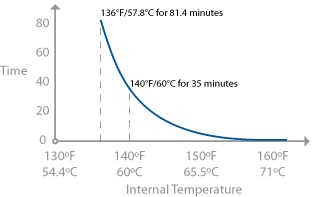I bought myself a yeast starter kit consisting of packets of DME, a flask, a stopper, and an airlock. So far, so good. Then I tried to use it.
The instructions said to heat water in the flask in the microwave. Thing is, there is no microwave outside of Livermore lab that will hold an upright Ehrlenmeyer. I had to dig out a butane hotplate.
The instructions also said to dump the DME into the flask after the water got hot. Well, it turns out DME will not go through a funnel into a flask full of steaming water. It turns into taffy as soon as the steam hits it.
I managed to get most of the DME in there. I boiled the solution, sanitized everything, and produced a starter.
Now I am thinking of using a beaker next time. A beaker won't take an airlock, but people are telling me airlocks are stupid, so it seems to me I should be able to put sanitized foil or something over a beaker without problems. Any reason not to do this?
It appears the kit's instructions should tell people to put the DME and water in the flask together. Perhaps I am overlooking something.
The instructions said to heat water in the flask in the microwave. Thing is, there is no microwave outside of Livermore lab that will hold an upright Ehrlenmeyer. I had to dig out a butane hotplate.
The instructions also said to dump the DME into the flask after the water got hot. Well, it turns out DME will not go through a funnel into a flask full of steaming water. It turns into taffy as soon as the steam hits it.
I managed to get most of the DME in there. I boiled the solution, sanitized everything, and produced a starter.
Now I am thinking of using a beaker next time. A beaker won't take an airlock, but people are telling me airlocks are stupid, so it seems to me I should be able to put sanitized foil or something over a beaker without problems. Any reason not to do this?
It appears the kit's instructions should tell people to put the DME and water in the flask together. Perhaps I am overlooking something.




